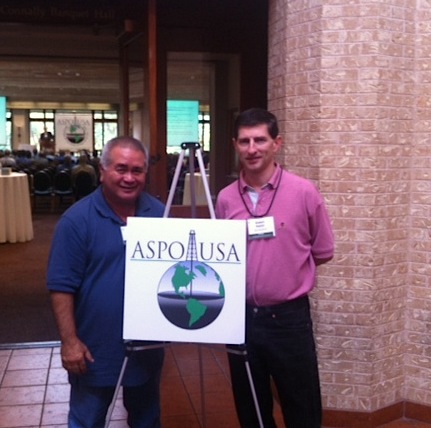Richard Ha writes:
The U.S. Energy Information Administration (EIA) made a dramatic announcement recently: it is revising its estimate of the Monterey Shale Oil supply downward by 96 percent.
Ninety-six percent is a lot.
Especially when you consider that the Monterey Shale Oil supply presented two-thirds of the United States’s oil reserves. It was estimated that we had 100 years of oil reserves left in this country altogether, but now that we know 66 percent of it doesn’t exist, there must be only 34 percent, or 34 years, of oil reserves remaining in the U.S.
However, the cost we would have to pay for oil companies to retrieve it would exceed what it would cost them to do so. In other words, if we consumers were willing to pay $1 million/barrel, all of those 34 years’ worth of oil could probably be recovered. But if we the people can only pay $150/barrel, we might only see ten years’ worth drilled. Hmm.
Those of us who attend Association for the Study of Peak Oil conferences (I’ve attended five now, the only person from the Big Island to do so) have known that the claim that the U.S. has a 100-year supply of oil was way overestimated. We are never going to be Saudi America.
Kurt Cobb writes about this at Resource Insights:
The great imaginary California oil boom: Over before it started
Sunday, May 25, 2014
It turns out that the oil industry has been pulling our collective leg.
The pending 96 percent reduction in estimated deep shale oil resources in California revealed last week in the Los Angeles Times calls into question the oil industry's premise of a decades-long revival in U.S. oil production and the already implausible predictions of American energy independence. The reduction also appears to bolster the view of long-time skeptics that the U.S. shale oil boom–now centered in North Dakota and Texas–will likely be short-lived, petering out by the end of this decade. (I've been expressing my skepticism in writing about resource claims made for both shale gas and oil since 2008.)
California has been abuzz for the past couple of years about the prospect of vast new oil wealth supposedly ready for the taking in the Monterey Shale thousands of feet below the state. The U.S. Energy Information Administration (EIA) had previously estimated that 15.4 billion barrels were technically recoverable, basing the number on a report from a contractor who relied heavily on oil industry presentations rather than independent data.
The California economy was supposed to benefit from 2.8 million new jobs by 2020. The state was also supposed to gain $220 billion in additional income and $24 billion in additional tax revenues in that year alone, according to a study from the University of Southern California that relied heavily on industry funding.
But that was before the revelation by the Times that the EIA will reduce its estimate of technically recoverable oil in California's Monterey Shale by 96 percent–almost a complete wipeout–after taking a close look at actual data for wells drilled there already. The agency now believes that only about 600 million barrels are recoverable using existing technology. The 600 million barrels still sound like a lot, but those barrels would last the United States all of 40 days at the current rate of consumption….
We need to take a step back and reevaluate where we are and what we need to do. As I’ve been saying for years now, we need to get on with geothermal. For the Big Island, the path we need to take is clear.
A byproduct of the oil operations is natural gas, and it would be helpful if natural gas prices rose to help with the costs of development.
It’s kind of like curtailed electricity. If it could be sold at any price, it would help lower the bid price of geothermal and wind operations and would result in lower electricity costs for the rubbah slippah folks.
If curtailed electricity could be bought at a cheap enough price, it could also enable a hydrogen storage option. Then we could get a hydrogen fuel cell option for various motors. And we could look at converting hydrogen to ammonia, so we would have nitrogen fertilizer to help with our food security.



